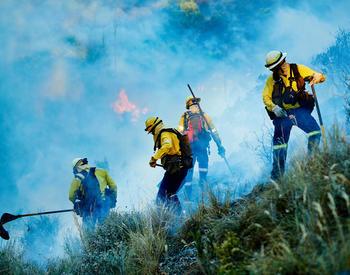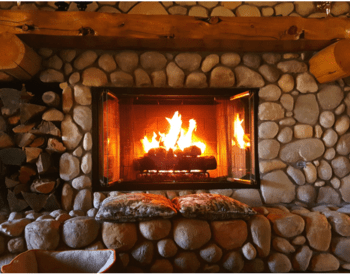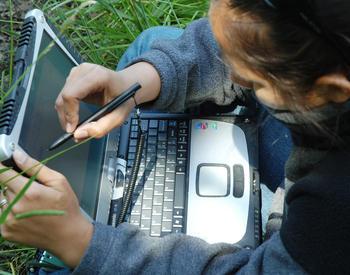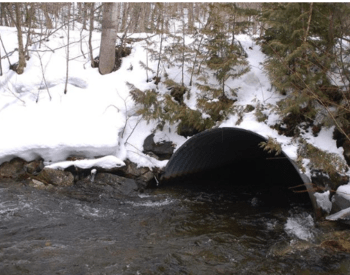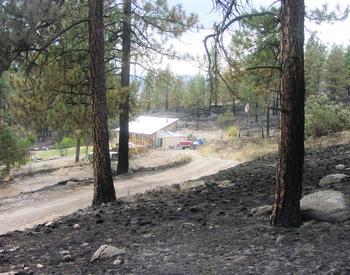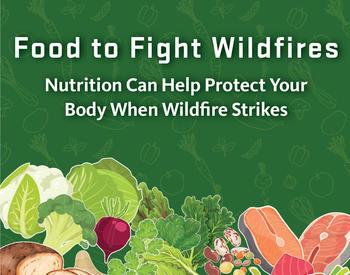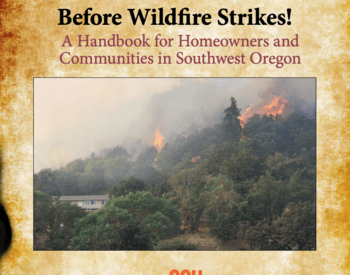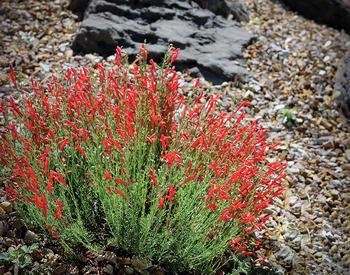Transcript
[Music] Well, I can't tell you how nerve-wracking it is to go through every fire season here. Wildfire coming through this area would irreparably damage us, and we're trying our best to avoid that. In 2020, there was a really disastrous streak of wildfires running through western America, and you would have houses that would be fine, the next wouldn't be, and then the next three would be okay. You know, we really want to take away the random factor. This kind of thing can happen to anyone. But how do we go about preparing for that? Wildfire has been part of the landscape of western Oregon for thousands of years, and it's not something that is going to go away, and it's not something that we're going to be able to exclude or suppress from the landscape. It's something that we're going to have to accept and learn to live with.
We are definitely on the outskirts of town. The most we can do in terms of adaptation is to look at our site and try to map out the areas where we think are problematic for fires. So reducing areas where we have accumulated debris beneath structures or around structures, so we're trying to make it to where if a fire does come on site, it does minimal damage. [Music] When we look at homes that have survived wildfires, we typically find that home construction materials and home hardening are the number one factor in whether or not a home makes it through a wildfire. That has to do with what kind of material the roof is built out of, whether or not the gutters have been cleaned, and if there are screens around ventilation systems in the house to prevent embers from entering into the home through some of those weaknesses or entry points. [Music] When we first started doing community outreach, we were knocking on doors and asking people if they'd be interested in free assessments for defensible space and potential fuel mitigation work. They just didn't understand the context of it. But once we started getting the work rolling, that's really when we were able to showcase and say, "Look, this is what it looks like." Having an outside crew like Northwest Youth Corps is really integral for us. We couldn't do it without them.
So there's always fire risk. We can't do anything but continue to do it because plants have this habit of growing continually. The best bang for our buck that we can get is by clearing out our gutters of dry material, making sure that brush that's close to the home is managed well and kept five feet away from the home. When you consider the backlog of work and then the need to maintain work as we do it, that really means that we have to be strategic about where we put our time and energy into fuel reduction. We really want to work from the home and move our way out. But most homes don't burn down from direct flame impact. It's from the embers that wash over them and get caught in vulnerabilities in the house where there's fuel present. [Music] The cost of one fire retardant drop from an airplane is equal to 10 weeks of work for our crews. Yet, what we've done this time over 200 acres, we're really impacting not only the people that are doing the work and they're learning trades and developing their work talents, but also the people in the community that we're working with. When we live close in with one another, we all own the fire problem together. And so that means that we all need to be in on maintaining our properties and reducing our fuels. That's how we help each other out as neighbors, and that's how we ensure that our own fuels reductions are going to be effective. The impacts to communities, the loss of a home, the stress and toll it takes on our firefighters who are responding to these events, it ripples out. It can't even be quantified. But what we can quantify are the things that we can do to protect our communities, and that takes a lot less effort and energy than it takes to respond to them once they've already happened. We can now look at it as a way to adapt and ways to integrate into our culture so that every homeowner, every person that's living out here knows what to look for and wants to look out for each other in regards to what they can do to mitigate fire potential.
Oregon has 60 million acres of land and 30 million acres of forest. We cannot cut our way to a fire-free future or reduce fire risk over vast landscapes. We can focus our limited time, energy, and money on ensuring our homes and communities are ready when fire comes. Are you and your neighbors prepared for wildfire? Please like and share this video. Visit their website for more information and resources, or connect with OSU Extension Fire Program specialist in your area.

